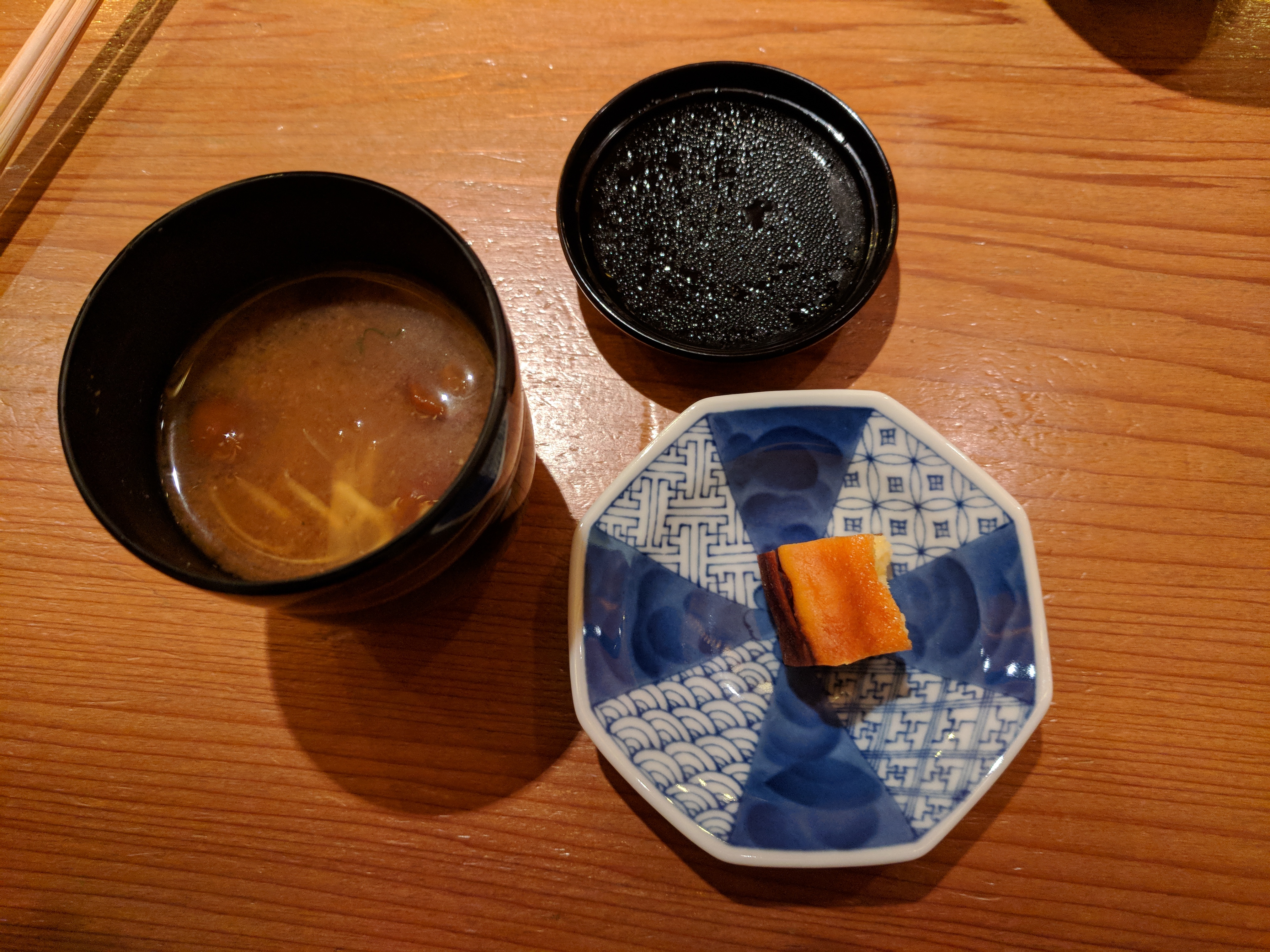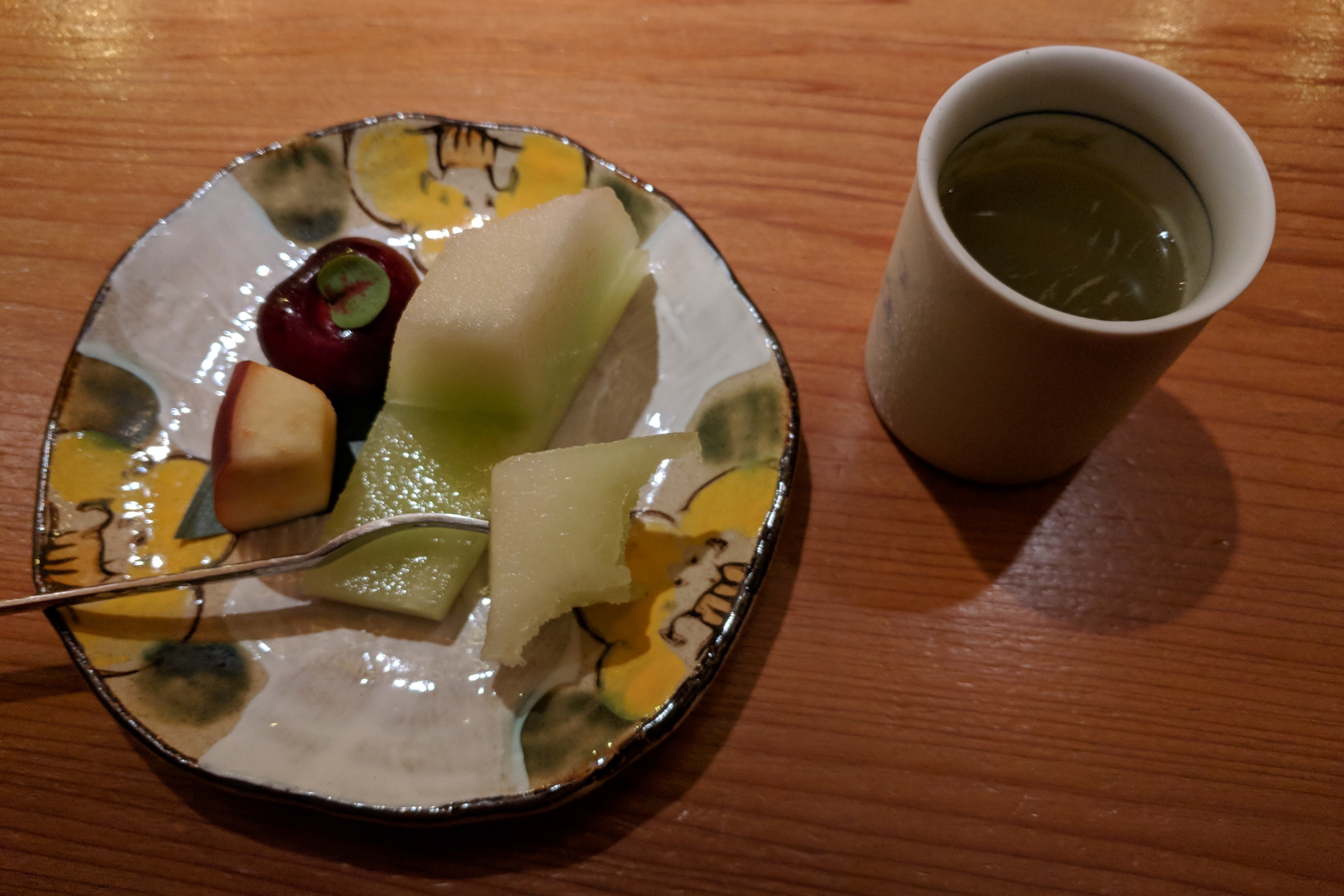Kitcho (吉兆) Taipei (the return)
(Back to Kitcho, this time with Mom and Dad!)
The below are the dishes I remember and/or took pictures of. It's possible I missed a dish since this time I was less fastidious about recording each course we ate (more focused on enjoying).
Amuse-bouche:
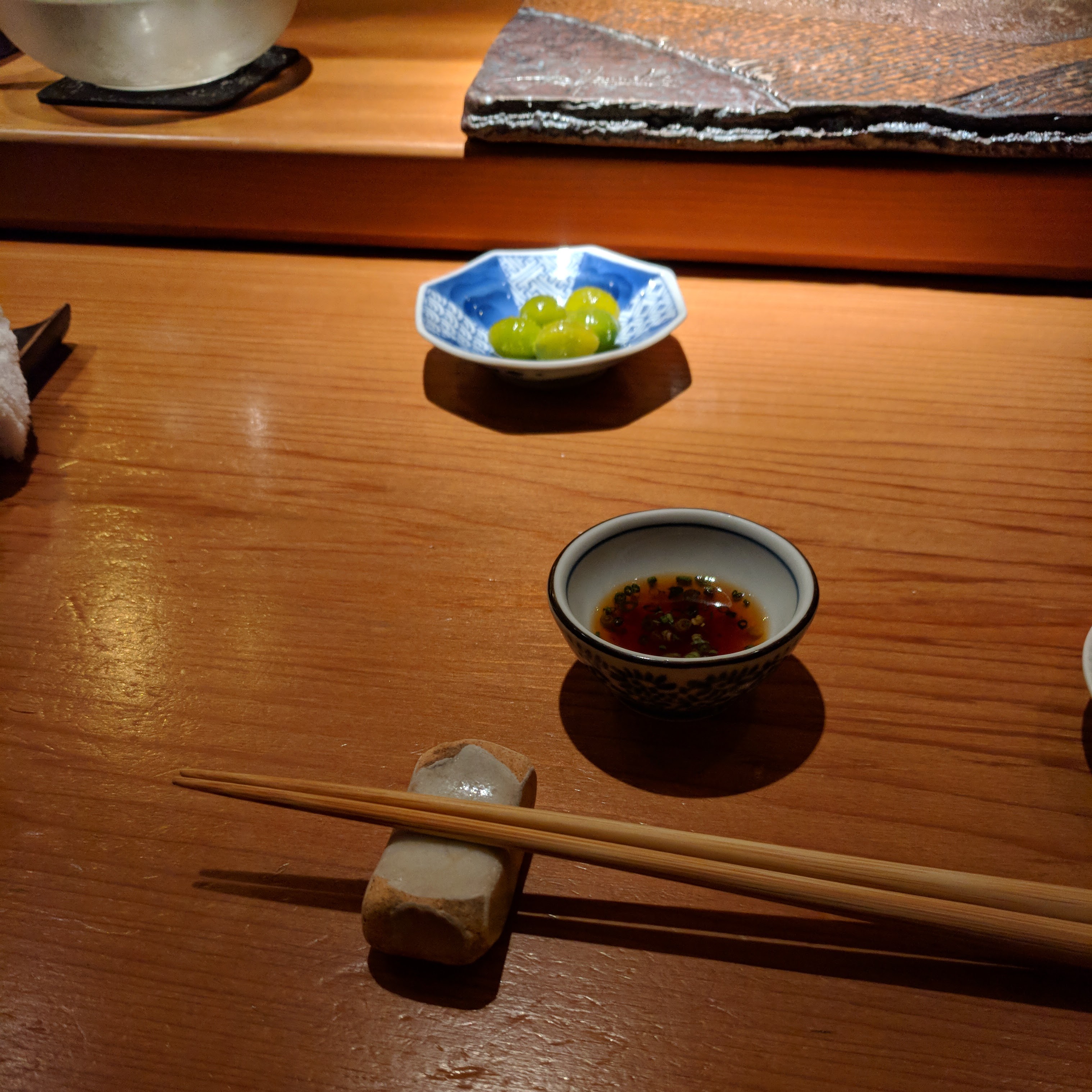
Ginkgo nuts with a sparse coating of sea salt. There may have been a bit of lime juice too. Our chef said that these were particular because they were green, instead of the typical yellow hue.
1st course: hirame sashimi with shiso flowers
Recommended to eat with wasabi and ponzu. Didn't get a picture of this one. The pink shiso flowers were a beautiful visual and flavor contrast to the white hirame (flounder).
2nd course: ishigaki gai (石垣貝)
Two pieces served on a slice of lemon. Recommended to eat one with sea salt and wasabi and one with wasabi and soy sauce. As part of the preparation, our chef forcibly threw them onto his board, and we could see them curl back up somewhat afterward.
3rd course: kamburi (giant yellowtail)
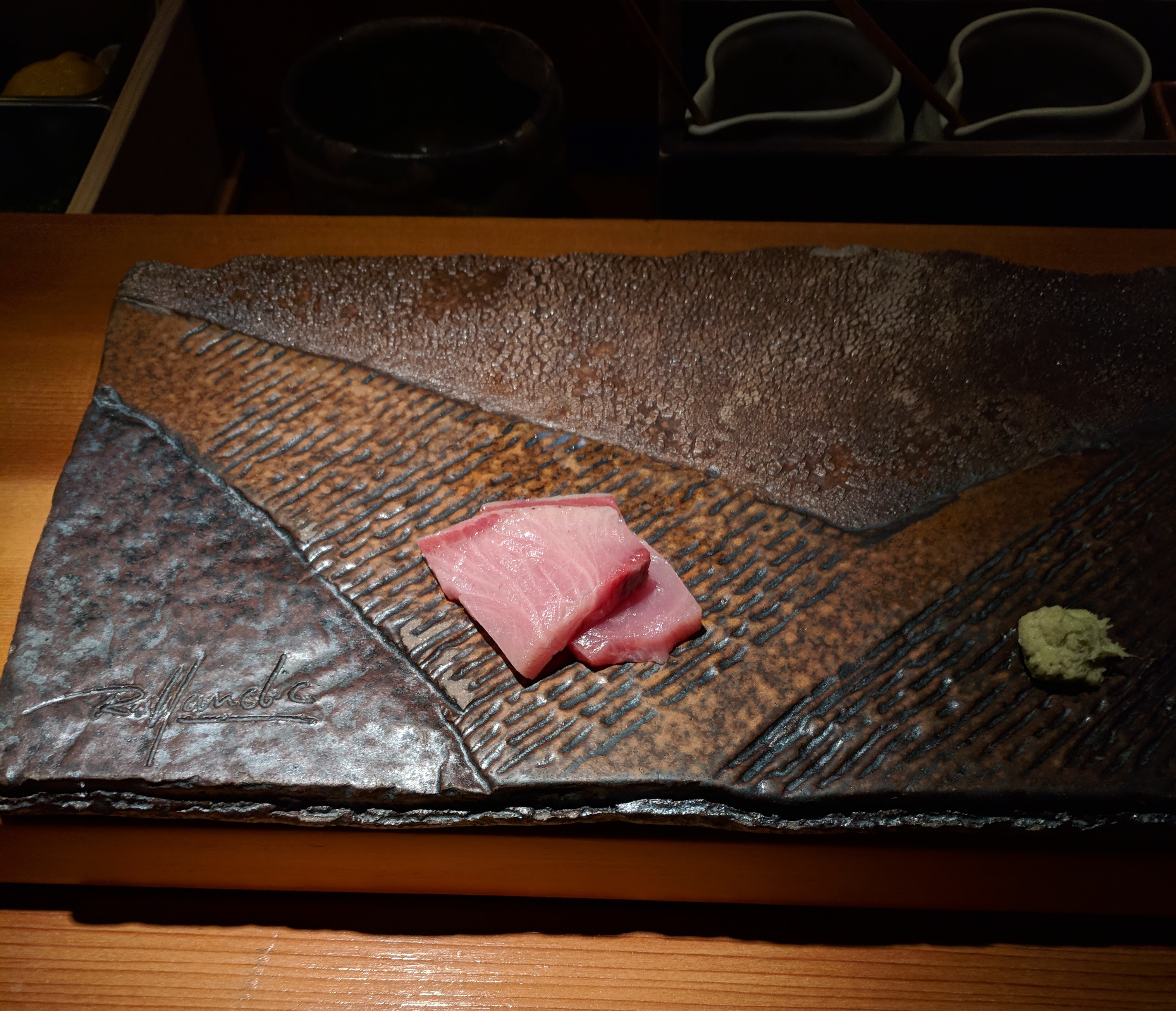
Recommended to eat with wasabi and soy sauce. Probably my favorite course, along with the liver we had later on. This was my Dad's favorite course as well. Compared to the yellowtail I had during my first visit to Kitcho (not sure what kind of yellowtail it was) these pieces had a deeper, stronger flavor, were redder in color, more fatty/oily, and had a very appealing hint of sourness. Joined with the wasabi and soy sauce, each piece was a perfect symphony without any flavor overwhelming the others.
4th course: Pacific mackerel with wakame
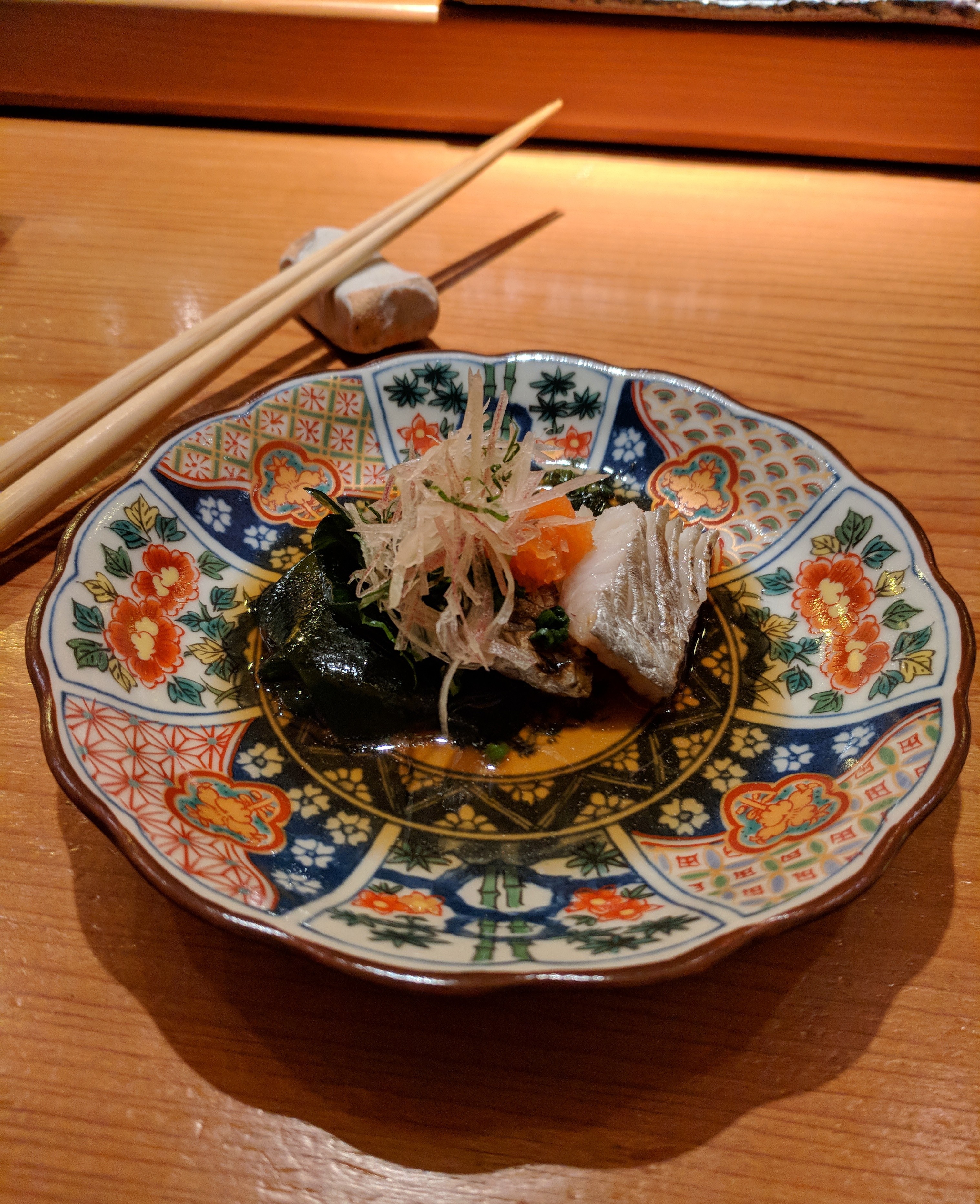
I'm not 100% sure it was mackerel but based on what the chef said (and the taste) that's my best guess. As the picture shows, there was much more to the dish in addition to the delicious wakame.
5th course: Japanese Spanish mackerel (sawara, 鰆魚)
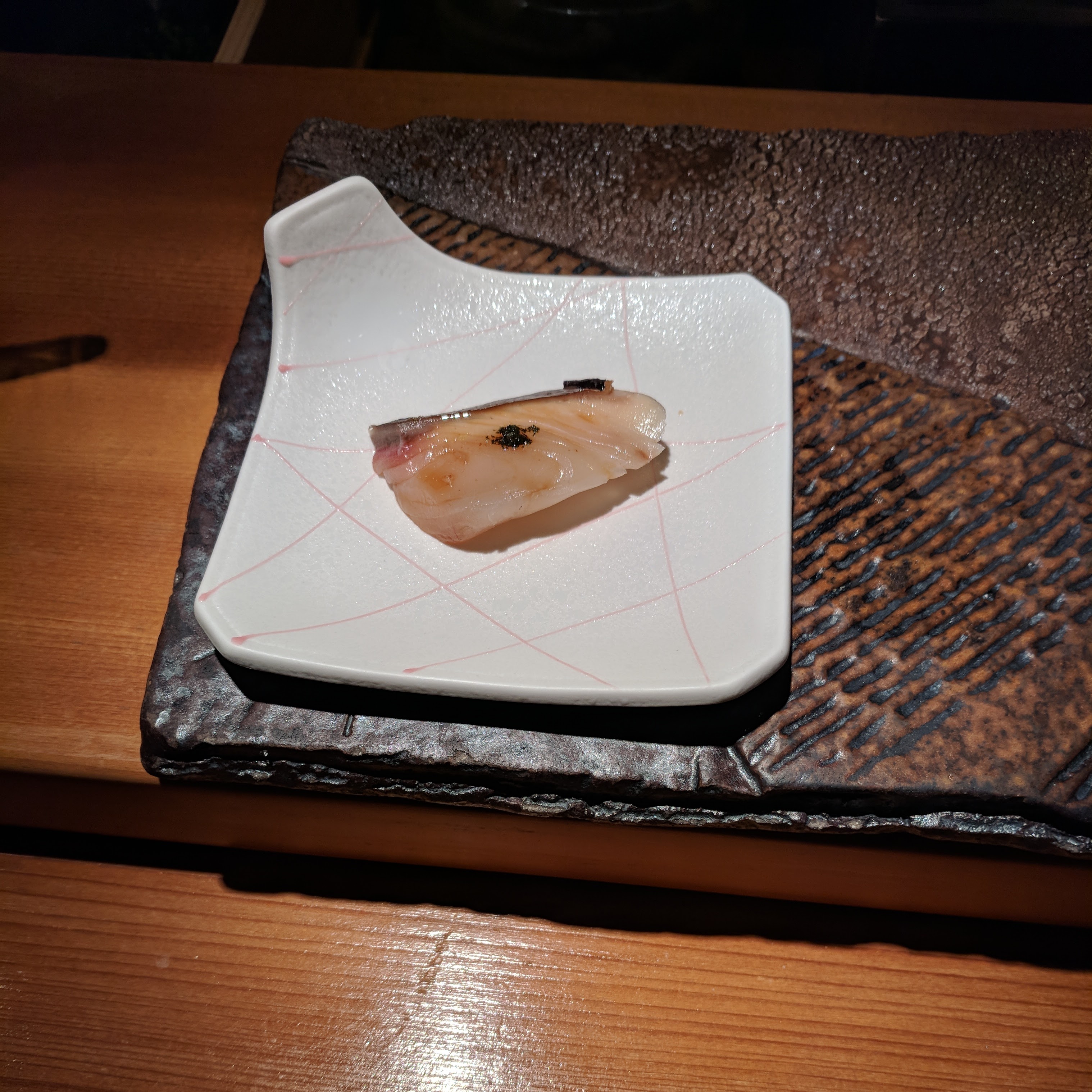
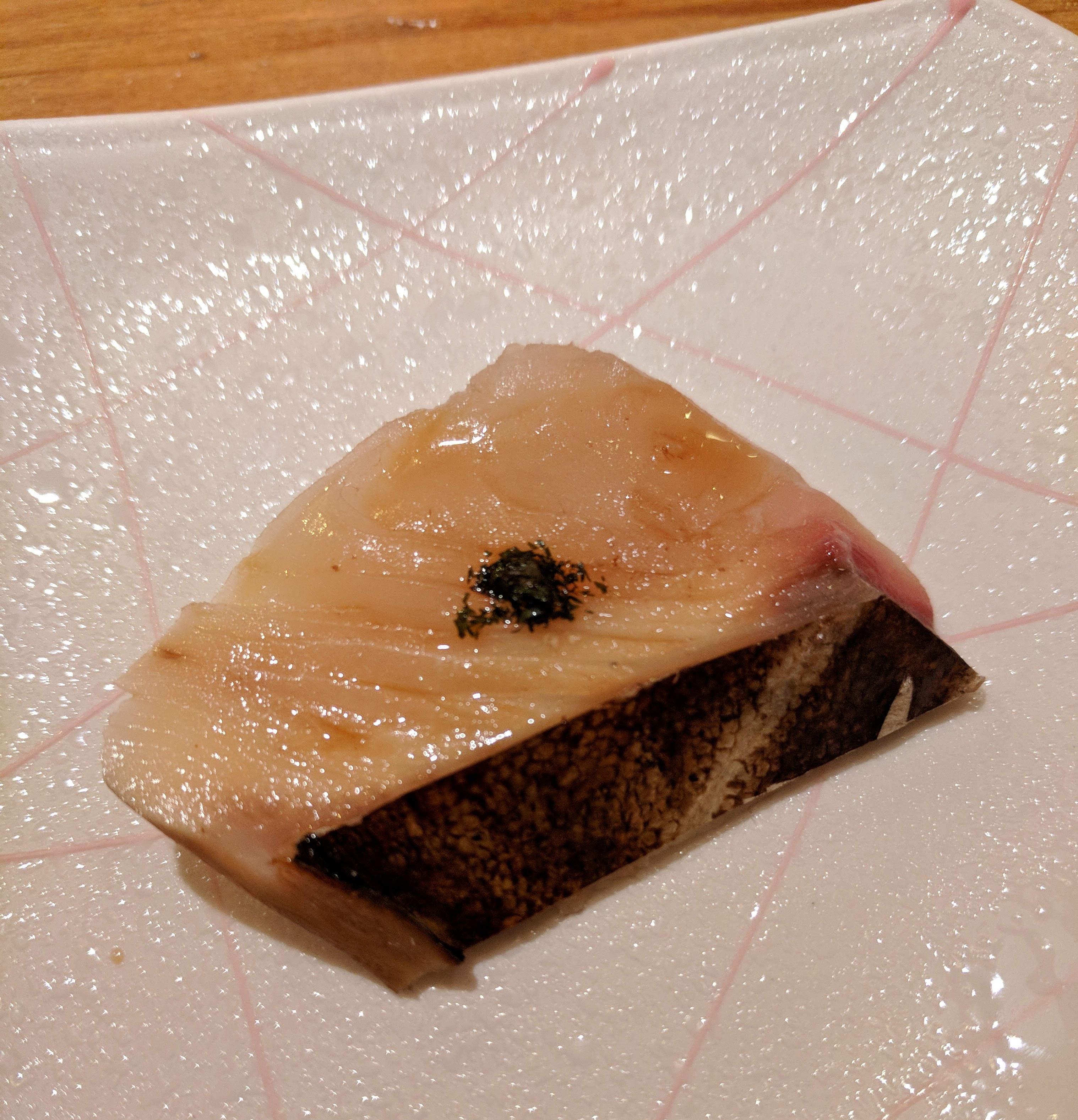
A different mackerel from what we had in the previous course, served with a dot of shiso sauce.
6th course: two kinds of uni
I heard (misheard?) the chef describe these as "agawa" and "ishiri" uni. I wasn't able to find anything when searching these terms, including messing around with the spelling, so either I misheard or these aren't well known classifications for uni. They might be place names for where the uni came from.
One piece of uni was served on top of a piece of seaweed-- the same seaweed I heard as "kombu" in the 7th course of my first visit to Kitcho. This piece had a slightly deeper and stronger flavor, while the other was cleaner.
7th course: lightly roasted rosy seabass ("紅喉魚")
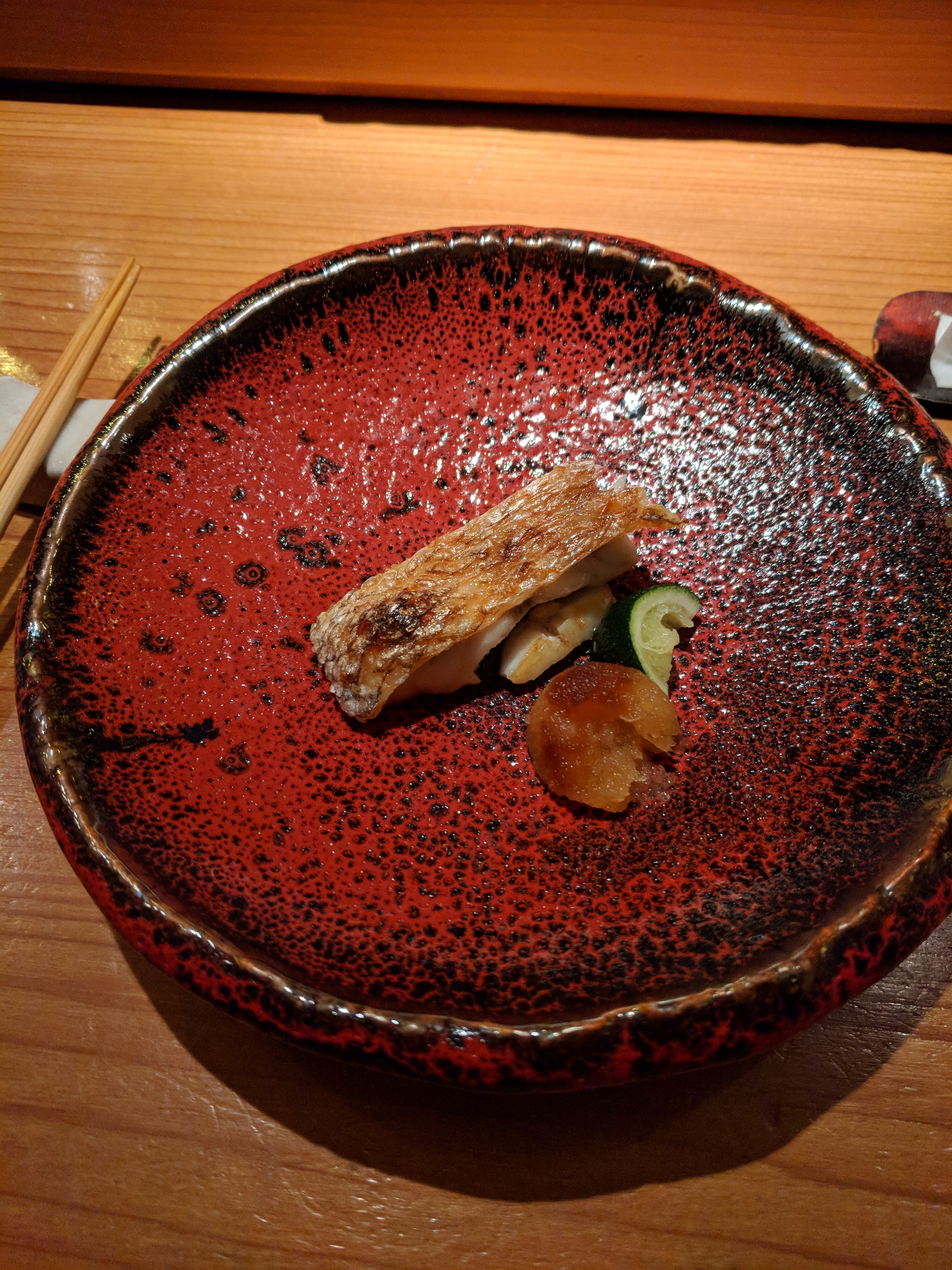
Served with lime and radish.
8th course: tuna roll
A very unique course. I didn't get a picture of this one since the chef handed it to us directly after rolling it. It was a sheet of seaweed wrapped around rice, wasabi, tuna, and... those tiny green scallions? (Not sure if there was a fifth ingredient). The seaweed he wrapped it in wasn't a rectangle-- it was shaped more like Oklahoma-- he left a "handle" on one end which he tucked back into the roll to keep the ingredients from falling out.
9th course: kinmedai nigiri
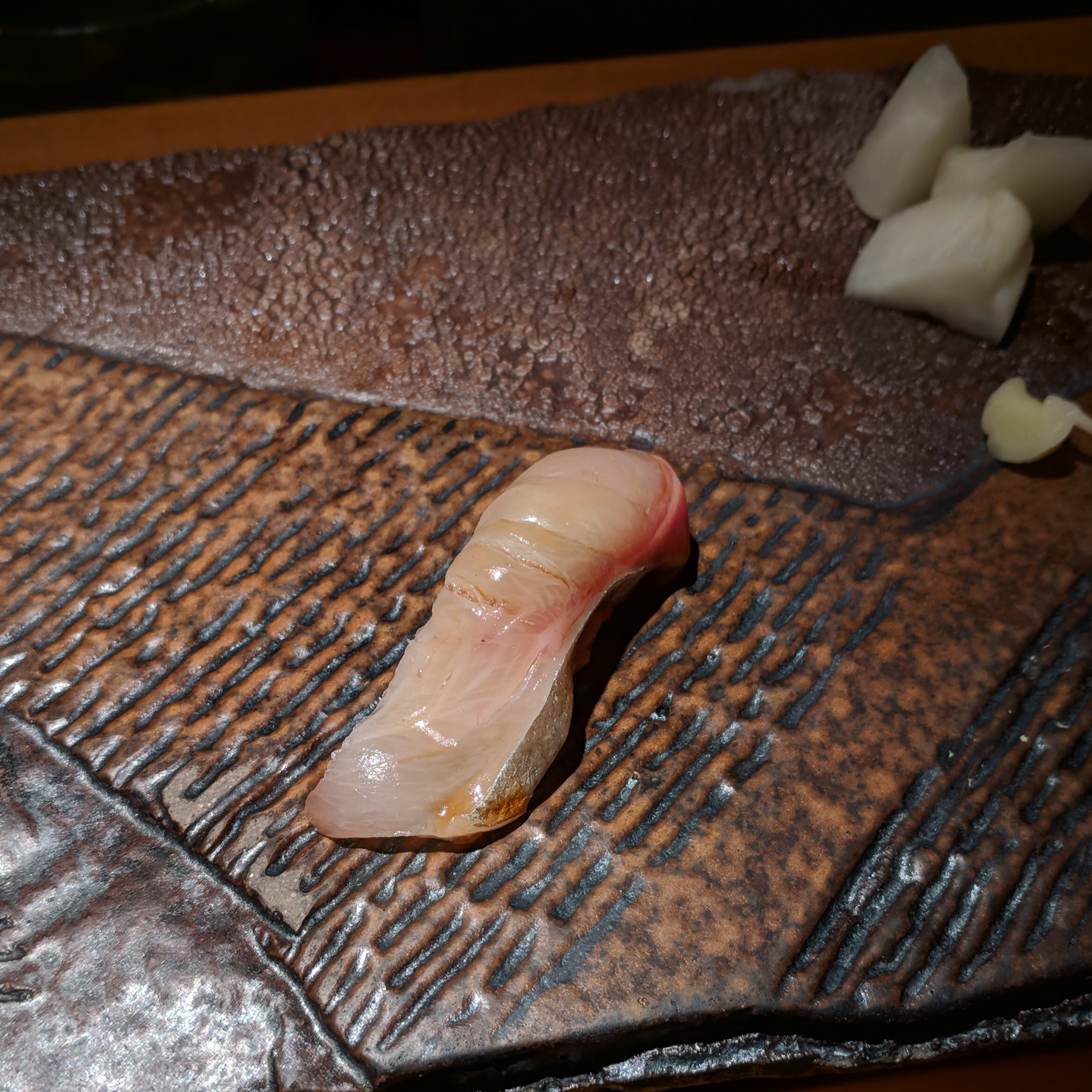
Kinmedai was the first nigiri course, same as during my first visit.
10th course: ika nigiri
No picture. During my first visit to Kitcho I thought the ika was one of the least impressive courses. This ika was totally different: it was amazing, which confirmed my sense that the ika I had the first time could've been much better.
This time, the ika was partially cut with cross hatches, instead of in a single direction, and was cut more finely. And it was prepared with salt and lime! I think this different preparation was enough to make it melt in our mouthes, even if the ika itself was of the same quality in both cases. This time, there was no lingering sense of chewyness.
I felt like this was a unique course and it'd have to be among my favorites. I'll definitely be thinking of it anytime I see ika in the future, especially since most ika preparations are uninspired and don't deal so deftly with the increased toughness of the ika compared to most sushi courses.
11th course: shima aji (striped jack) nigiri
12th course: nodoguro (blackthroat seaperch) nigiri
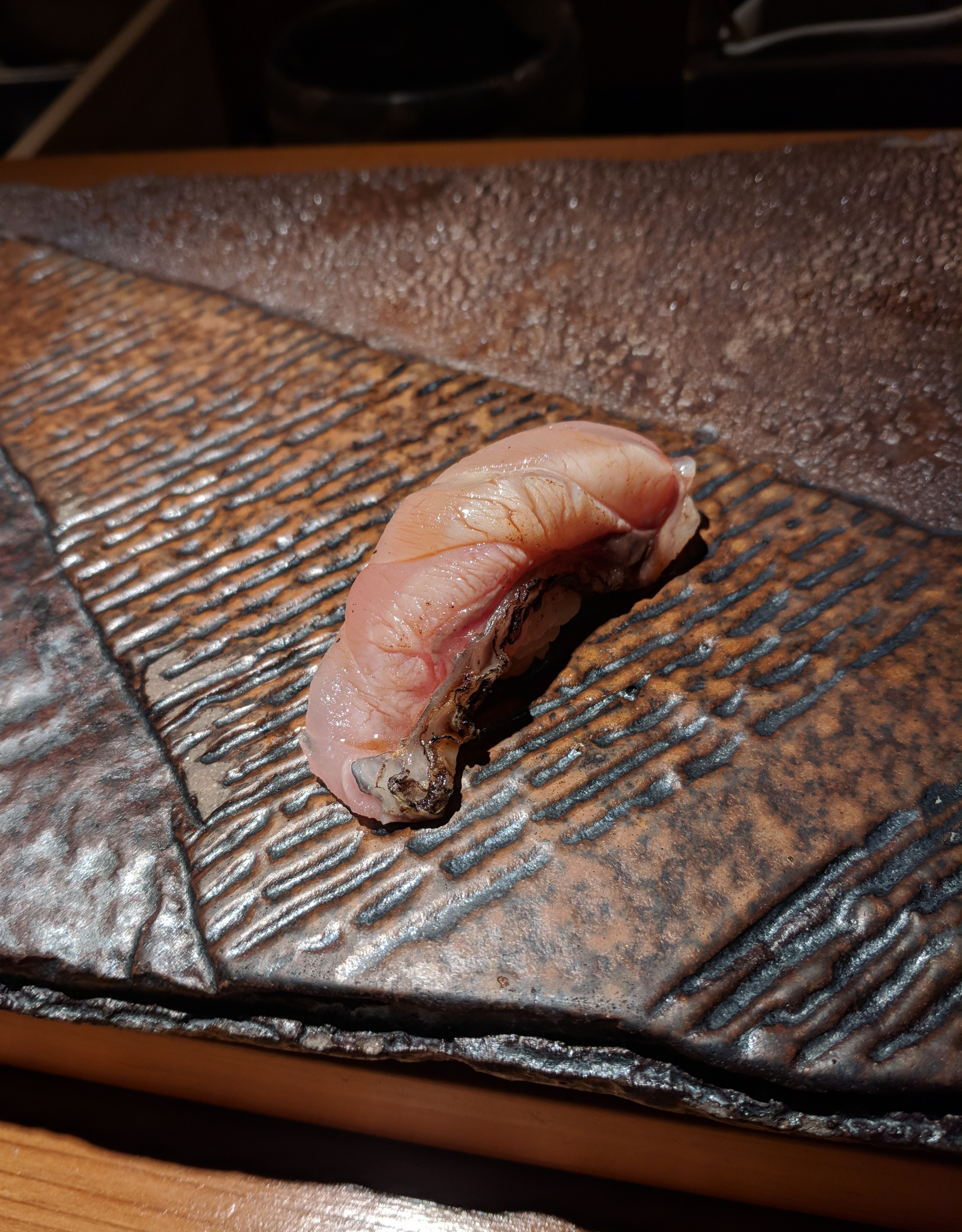
As our chef pointed out, our nodoguro was lightly seared on the outside. This was the standout smoky course within a meal that included several courses with an amazing depth of smoky flavor.
13th course: shiro ebi (baby white shrimp)
As discussed in The Sushi Geek's post our chef formed the top of the nigiri out of many (~30?) small shrimp, which created a truly unique texture, in addition to the clean, sweet flavor.
14th course: kohada (gizzard shad)
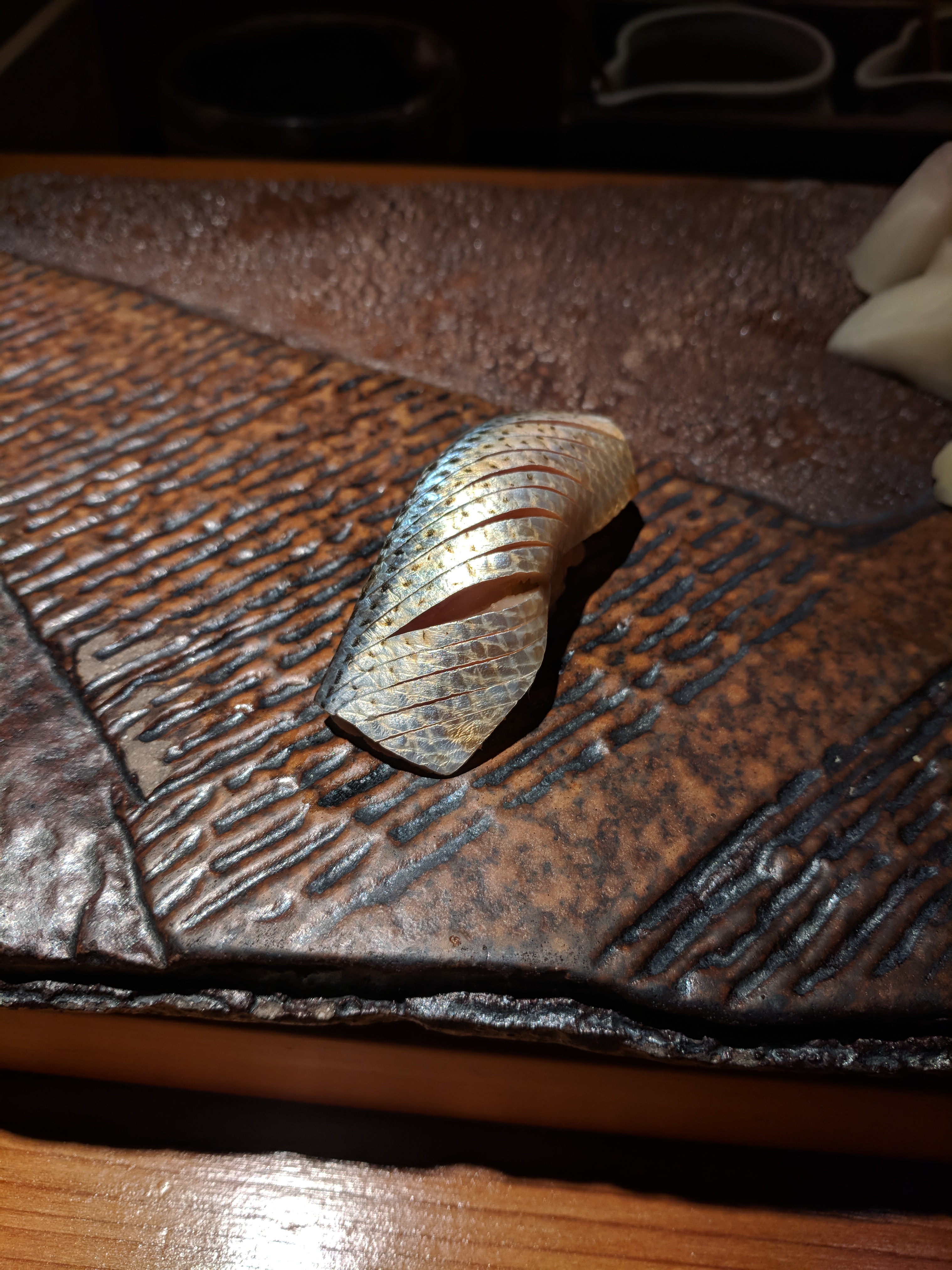
Definitely one of my favorite courses. I remember the taste as strong, diverse, and balanced, with the cuts in the fish adding a lot of texture and helping quickly spread the flavor in my mouth. Also one of the most beautiful courses.
15th course: anglerfish/monkfish "鮟鱇魚" liver (ankimo?)
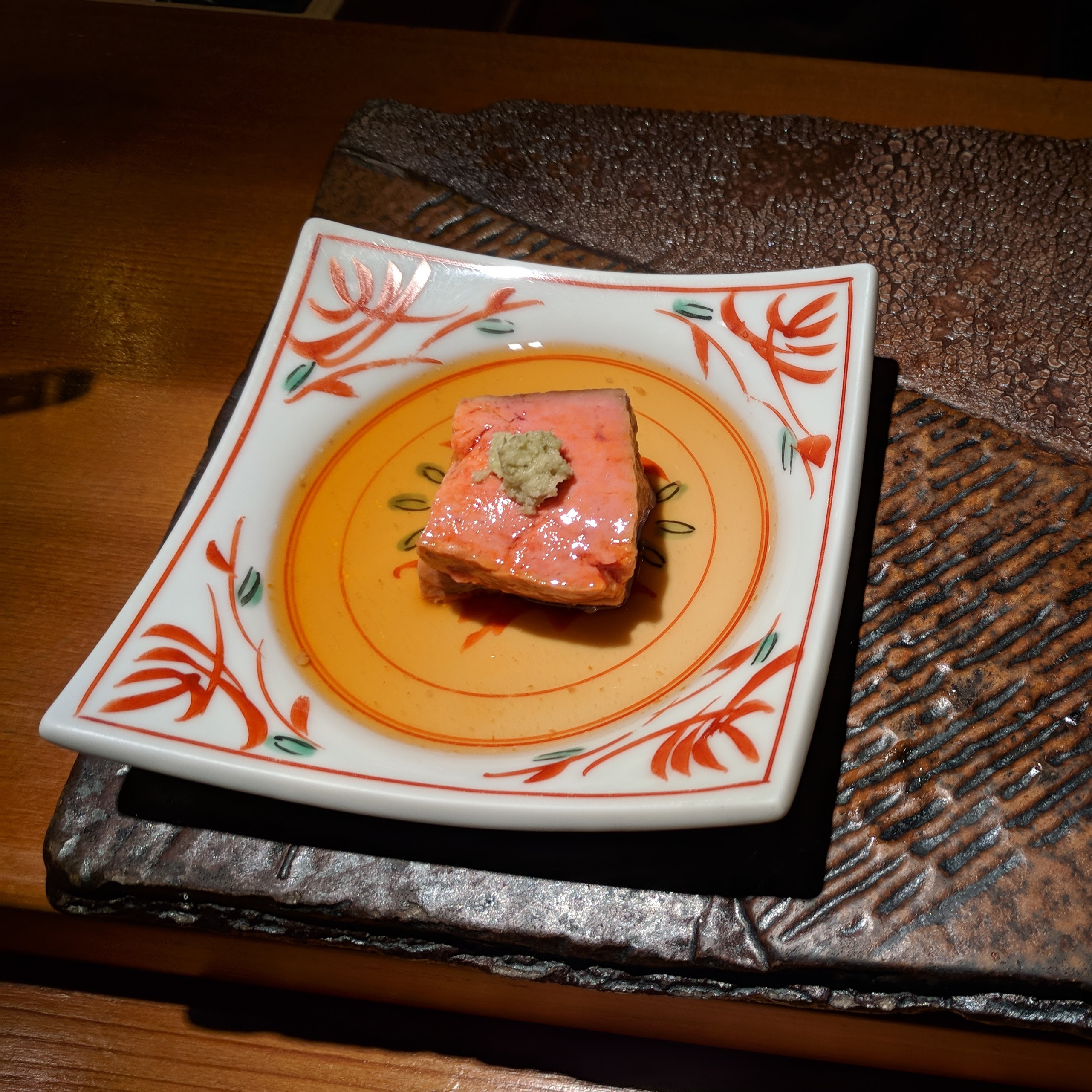
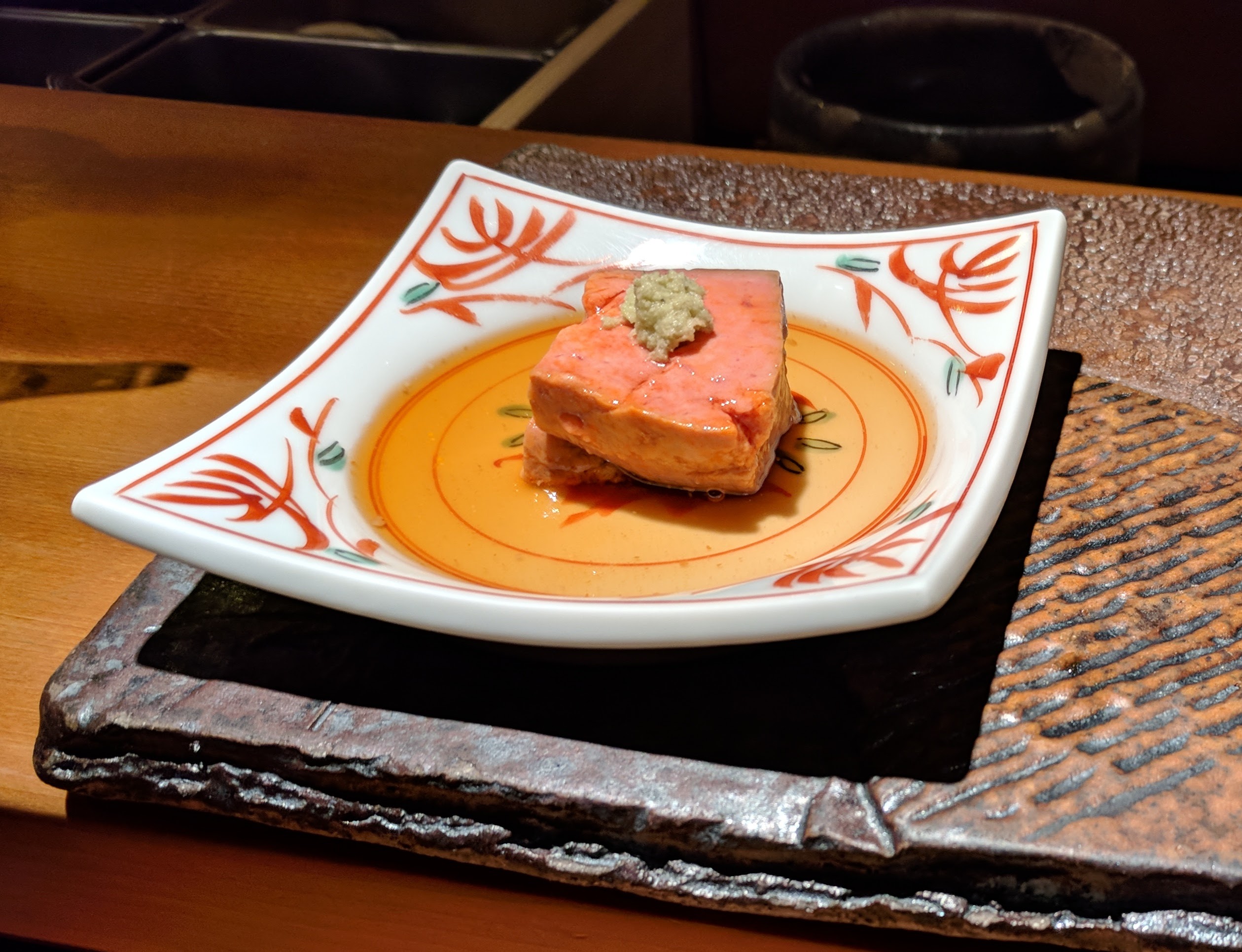
The info I've found online suggests this was monkfish (aka anglerfish) liver. Our chef said that this was something you could only get in the summertime, but the info about monkfish (ankimo) liver sushi says that it's a winter delicacy. Most likely I misheard, or this is a special summertime monkfish... which might not even be a thing.
For me, this liver is tied with the kamburi for my favorite course of the meal. Suffice to say that I ate it with few expectations and the taste surprised me. It was so good I felt like I could almost cry. Foie gras is of course an apt comparison and I've never had foie gras of this caliber but it's hard for me to imagine foie gras ever tasting this good.
16th course: akami nigiri
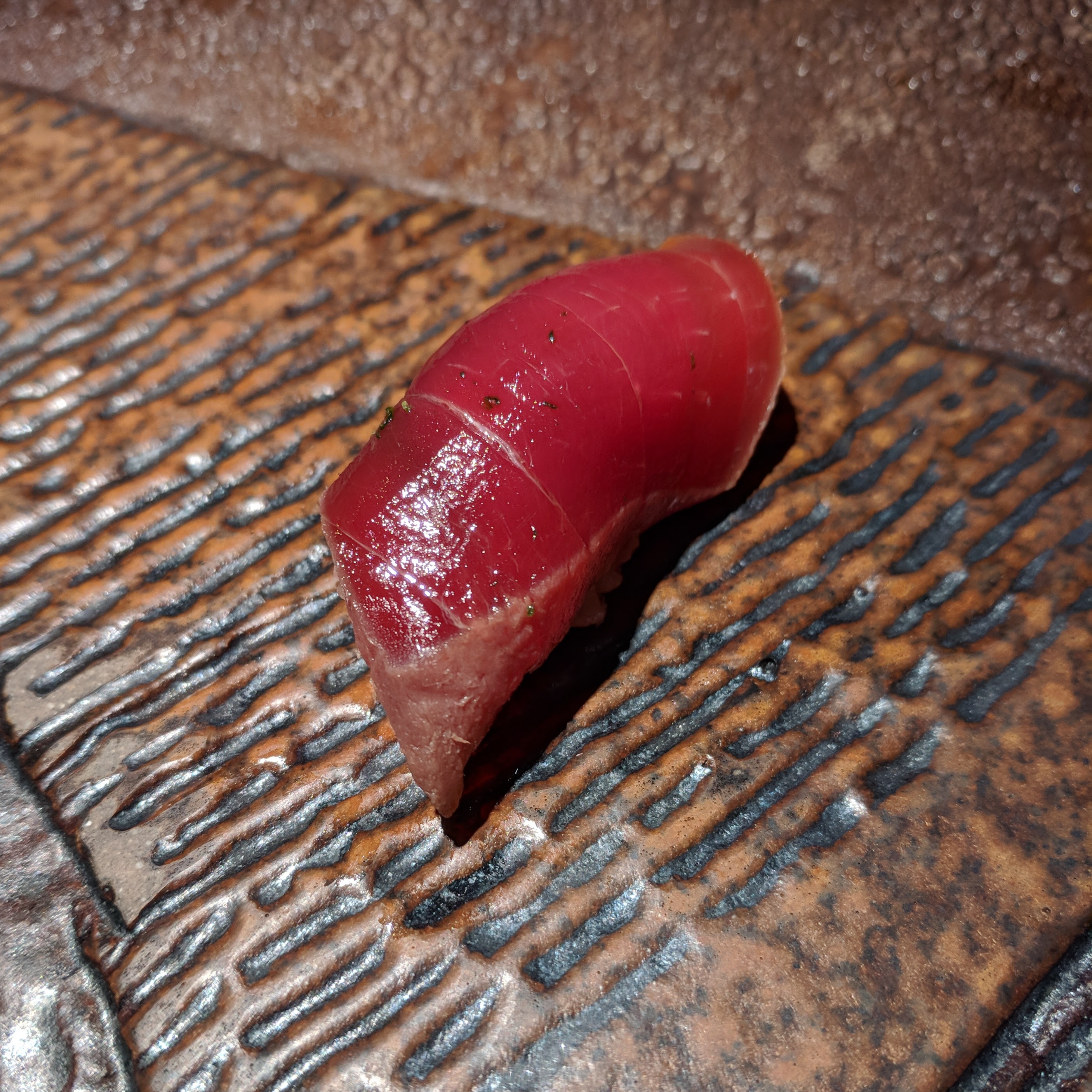
17th course: otoro nigiri
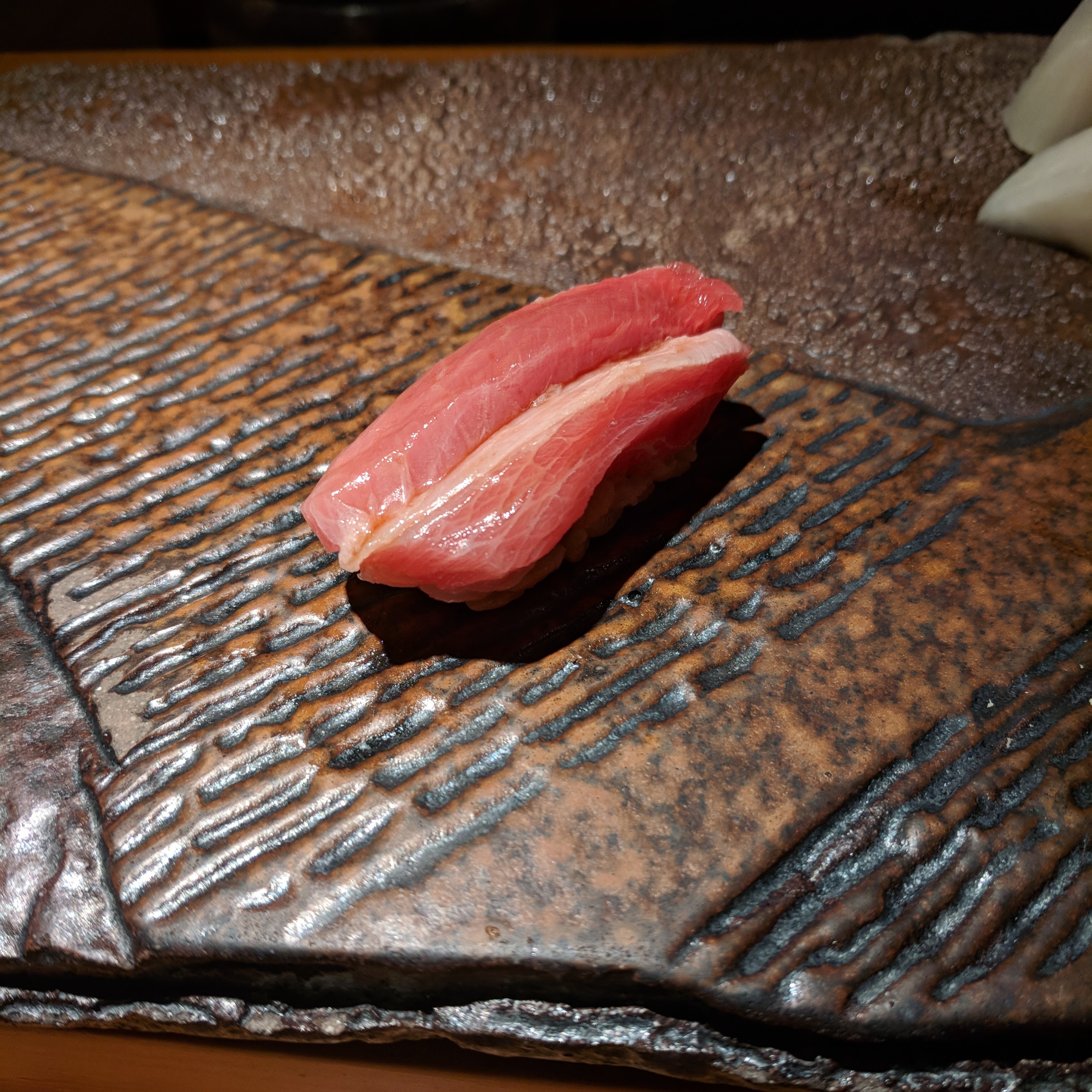
18th course: anago nigiri
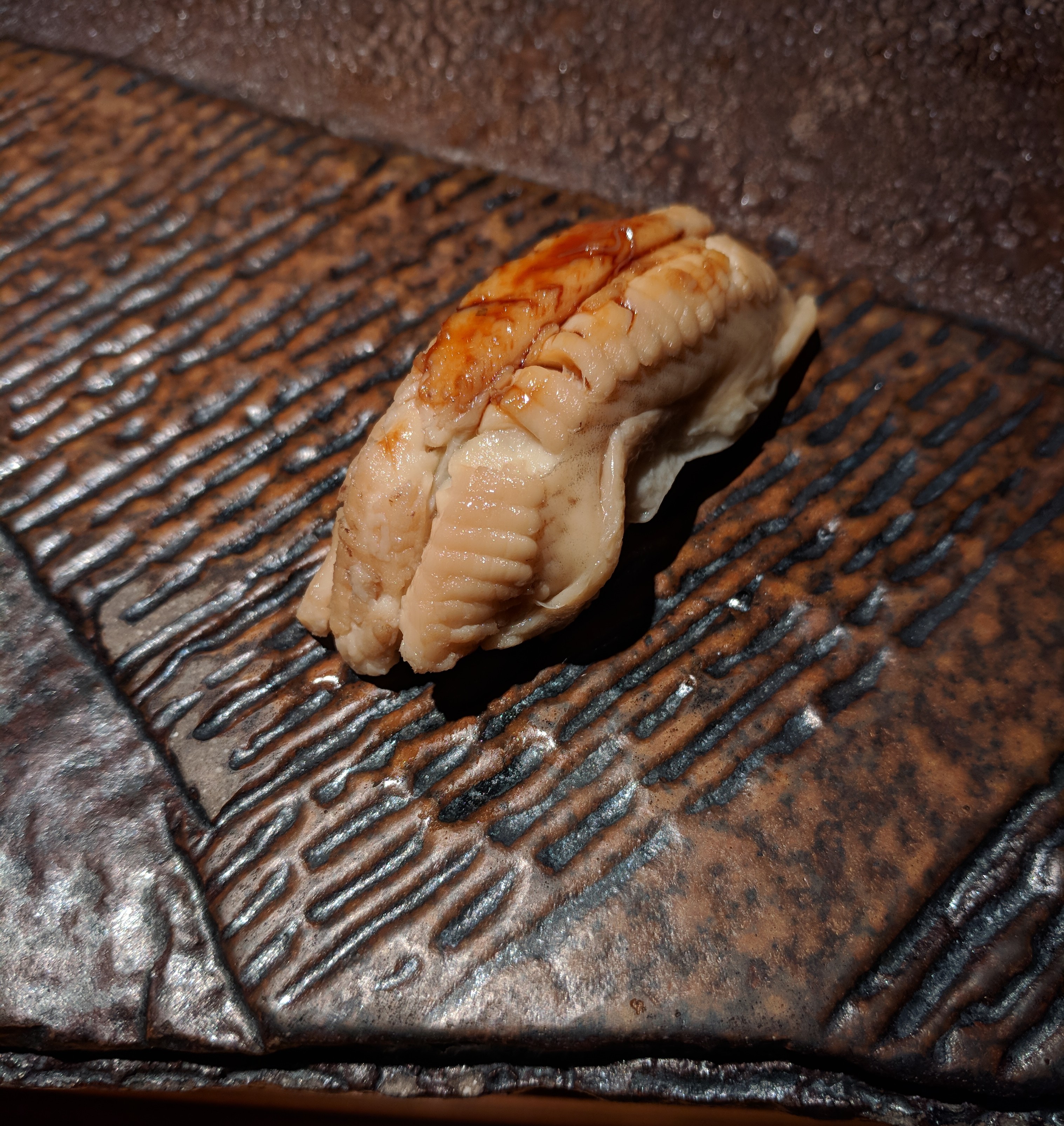
Mom's favorite course, one of my favorites as well, and definitely the best eel I've ever had. It wasn't suffused with fat like all the unagi I've ever had-- it tasted more lean, but there was oil there as well-- just distributed evenly throughout. Truly an amazing food.
19th course: sujiko (salmon) roe
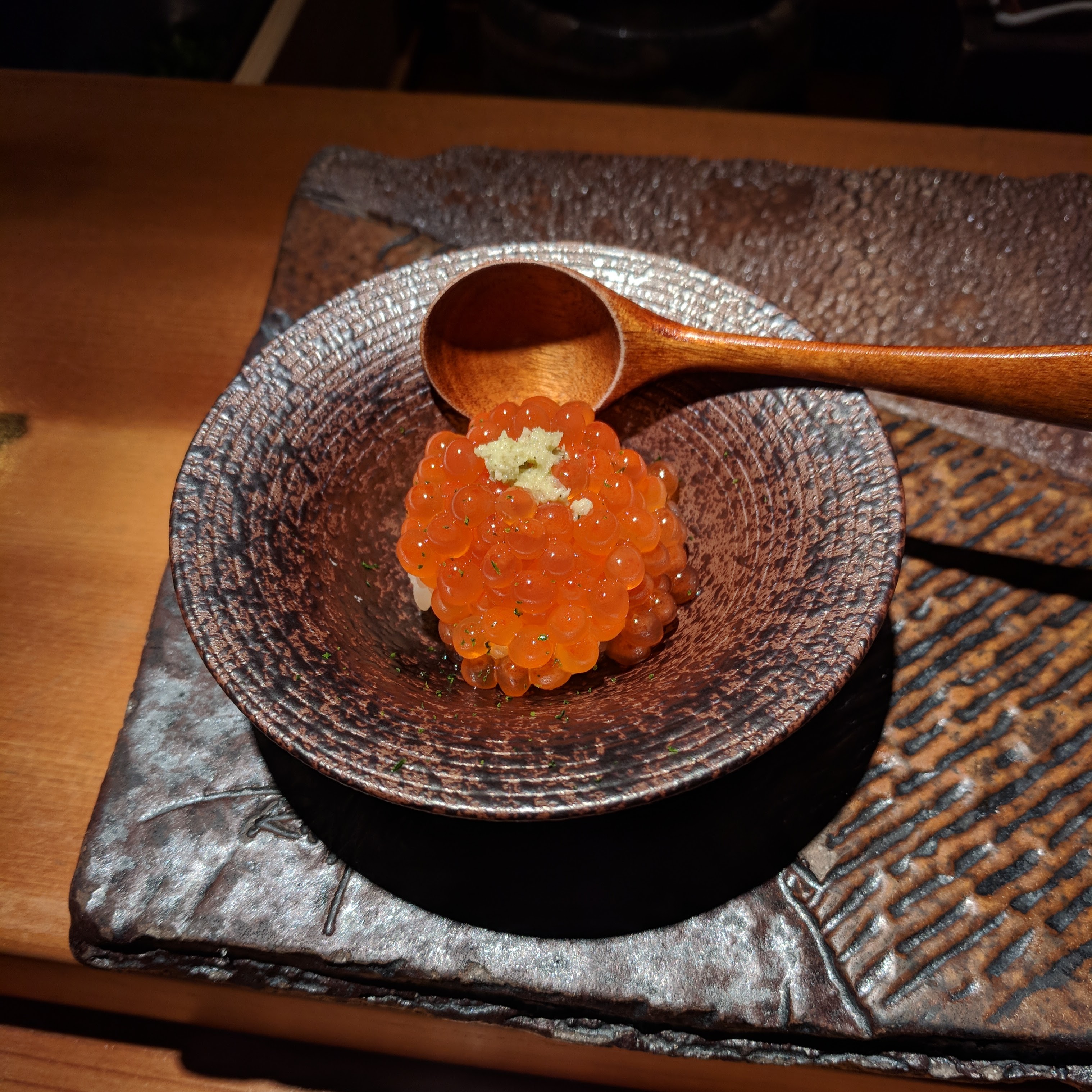
Not 100% sure I heard our chef correctly but I'm pretty sure this was sujiko. Served in a bowl atop rice.
20th course: mystery nigiri
I wrote down what the chef said to me (a kind of fish in Mandarin) but it's not in the dictionary. Will need to do more sleuthing before I can figure out what this was.
21st course: ama ebi (sweet shrimp) nigiri
Two delicious sweet, fatty pieces of shrimp laid in opposing directions atop rice.
22nd course: winter melon soup
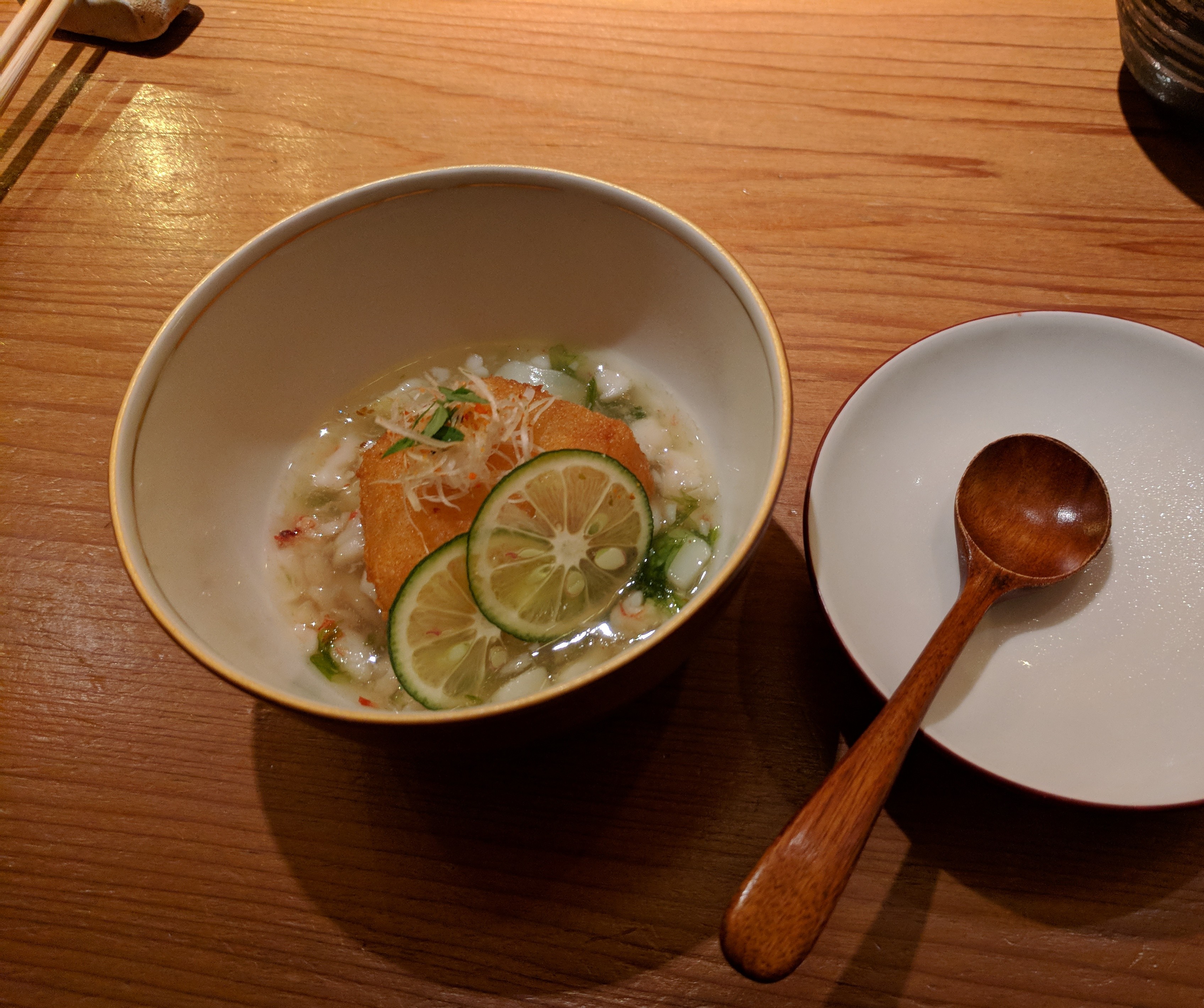
I've had the white stuff in the soup before at a vegetarian restaurant. It's a relatively expensive ingredient that comes from the bulb of a flower. I'll look it up and add it here with the correct name when I get a chance.
23rd course: tamago
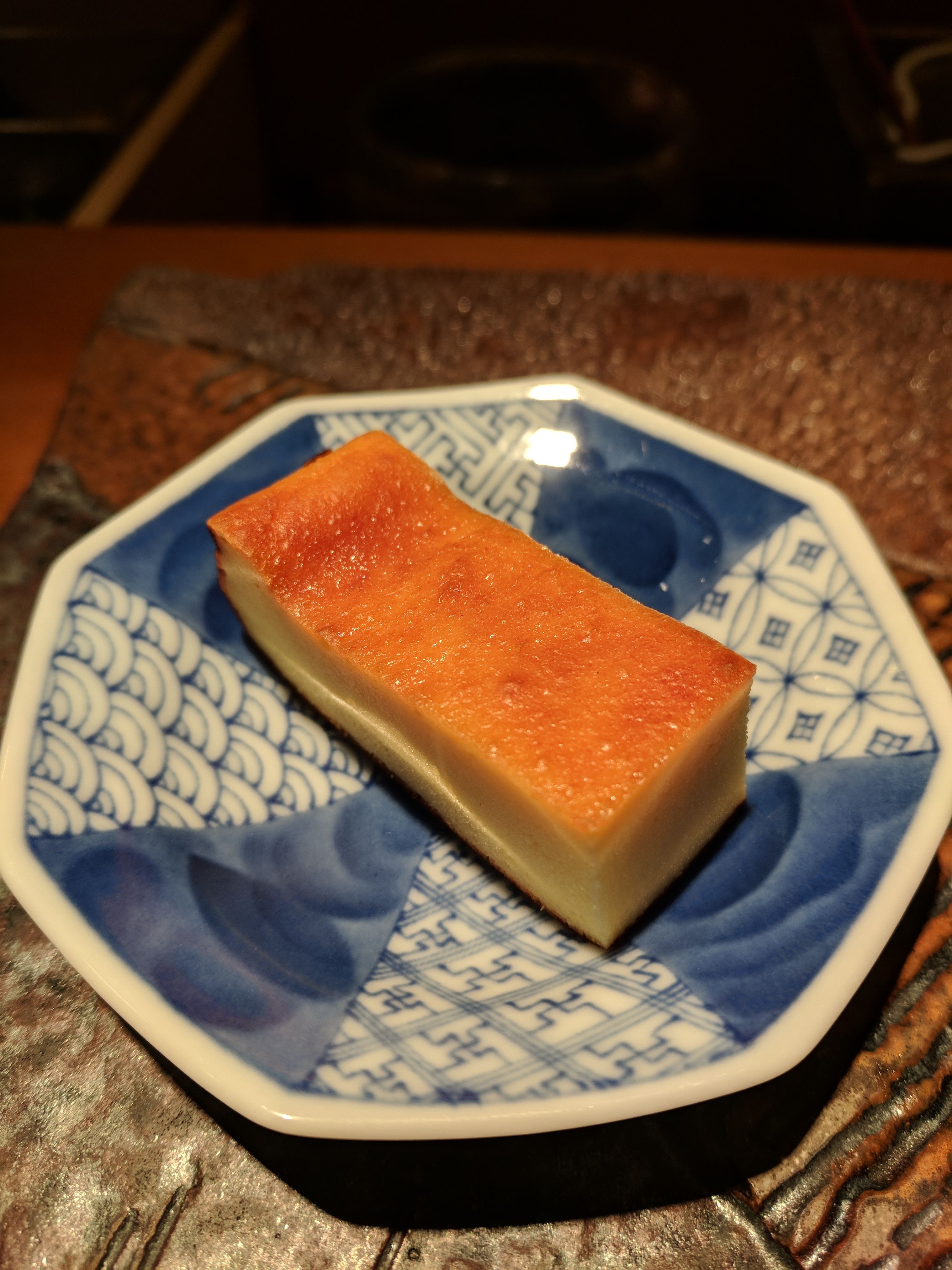
24th, 25th courses: miso soup, fruit, matcha tea
